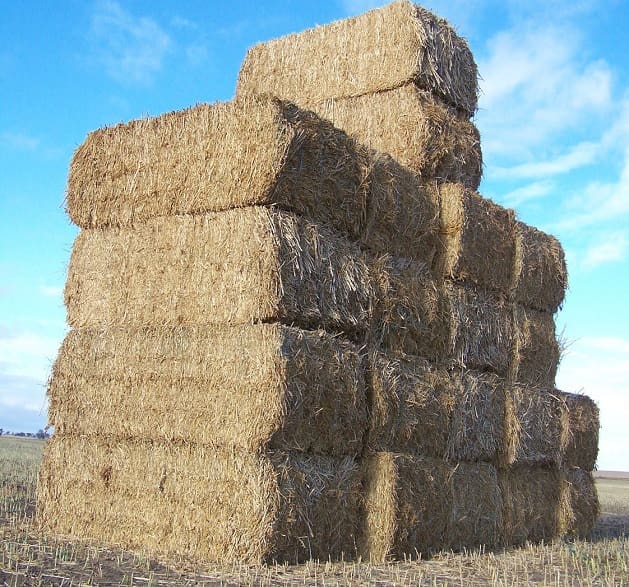GRAIN growers in Victoria and South Australia who have cut crops for hay and silage due to moisture stress and frost should be mindful of the amount of nutrients being removed from their paddocks.

Cutting hay removes significantly more nitrogen, potassium and sulphur than if the crop was left standing for grain production. In canola, up to five times more sulphur can be lost. (Photo: Felicity Pritchard)
Cutting hay removes significantly more nitrogen, potassium and sulphur than if the crop was left standing for grain production.
Crop nutrition experts supported by the Grains Research and Development Corporation (GRDC) say hay can remove up to two times more nitrogen and up to 10 times more potassium than if the crop was harvested for grain. In canola, up to five times more sulphur can be lost.
Agriculture Victoria research scientist Roger Armstrong said one-off hay cutting of a failed crop could prompt changes in crop nutrition programs and paddock management into the next season.
“With nutrients that would otherwise be recycled in the soil being lost through the removal of crop material in hay and silage, soil tests will become more important ahead of next year’s sowing to inform nutrition programs in 2019,” Dr Armstrong said.
Acidifying effect
Agronomist and former International Plant Nutrition Institute Regional Director for Australia and New Zealand, Rob Norton, said the repeated removal of hay was considered one of the most acidifying of agricultural practices, and on acid soils could exacerbate the issue in the longer term.
He said the removal of cereal or canola hay required 25 kilograms/hectare of lime for each tonne of biomass removed, or 45kg/ha for each tonne of annual legume hay removed, to neutralise the resulting acidity.
Cutting hay reduces inputs of organic matter into the soil for that season. The size of the effect when the hay is cut from a failed crop might be roughly similar to organic matter lost from burning stubble residues from a good crop, compared to retained stubble.
Following hay cutting, little residue cover (maybe 0.4t/ha of residue after hay cutting versus 2.0t/ha after harvest) remains.
Growers are therefore advised to reduce grazing and traffic across these paddocks to minimise the risk of wind and water erosion which also contribute to soil nutrient loss.
Source: GRDC
More information: https://grdc.com.au/frost-faq

HAVE YOUR SAY